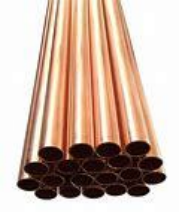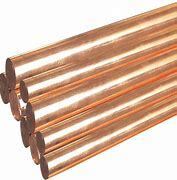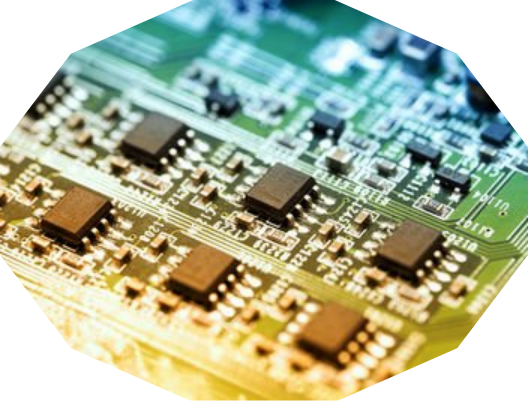1. Introduction
In the past 48 hours, global copper prices have surged due to supply chain disruptions in Chile—the world’s largest copper producer—triggering renewed interest in copper-based materials like the versatile copper rod. As industries from construction to electronics seek reliable conductive and corrosion-resistant components, understanding what a copper rod is and how it’s used has never been more relevant.

Whether you’re an electrician installing an earthing system, a welder joining copper components, or a recycler stripping copper wire for scrap, you’ve likely encountered some form of copper rod or its close relatives like copper strips, bars, or pipes. This article breaks down everything you need to know about copper rods and related products in a clear, practical way.
2. What Is a Copper Rod?
A copper rod is a solid, cylindrical piece of high-conductivity copper, typically manufactured through extrusion or drawing processes. Known for its excellent electrical and thermal conductivity, ductility, and resistance to corrosion, copper rod serves as a foundational material in numerous industrial applications.
Commonly referred to as rod copper or copper round bar, these rods come in various diameters and purity levels—ranging from oxygen-free high-conductivity (OFHC) copper to alloyed variants like beryllium copper for specialized uses.
3. Types and Applications of Copper Rods
3.1. Earthing and Grounding Rods
One of the most critical safety applications of copper rods is in electrical earthing systems. Products like the copper earth rod, earthing rod copper, and ground rod copper are driven into the soil to safely dissipate electrical faults. For cost efficiency and strength, many opt for copper bonded earthing rods or copper clad steel earth rods—steel cores coated with a thick layer of copper (often called copper bonded or copper clad).
These include copper bonded ground rods and copper clad ground rods, which offer the conductivity of copper with the tensile strength of steel. When shopping, you’ll often compare earthing rod price versus performance—especially for projects requiring long service life in corrosive soils.

3.2. Welding and Brazing Rods
In metal fabrication, copper rods double as filler materials. A copper welding rod or copper rod for welding is used in specific applications where joining copper to copper is required. For lower-temperature joining, copper brazing rods—especially copper to copper brazing rods—are preferred.
Techniques like copper rod welding require compatible fluxes and heat control to avoid cracking. Professionals often choose copper to copper welding rod or welding rod copper based on the base metal and joint design.
4. Copper Rod vs. Other Copper Forms
4.1. Copper Strips and Tapes
While copper rods are round and solid, copper strips (also called copper stip, copper stripes, or copperstrip) are flat and thin. Used in busbars, grounding straps, and even as copper strip for earthing, these come in rolls or cut lengths. Variants include flat copper strip, 1mm copper strip, beryllium copper strip, nickel plated copper strip, and flexible copper bus bar.
Recyclers often deal with stripping copper wire to recover copper strip wire or clean metal for resale. The best way to strip copper wire includes mechanical strippers—not burning copper wire for scrap, which is illegal and hazardous. Fast methods include automated wire strippers for stripping wire for recycling or scrap.
Specialty items like copper tape for snails (used in gardening) or copper roof strip show the material’s versatility. If you’re searching for ‘copper strip near me’ or ‘roll of copper strip,’ local metal suppliers or online retailers typically stock copper strip roll in various alloys and thicknesses.

4.2. Copper Pipes and Tubing
Copper rod shouldn’t be confused with copper pipework. Copper tubing—like 15mm copper pipe, 22mm copper tube, or aircon copper pipe—is hollow and used in plumbing and HVAC systems. Air conditioning copper pipe (also called ac copper pipe) must meet strict standards for pressure and purity.
Professionals frequently bend copper pipe, solder copper tube joints, or replace fittings using copper pipe connectors. Pricing varies by size—ac copper pipe price differs from standard copper pipe price—and by type (e.g., Type L vs. Type M).
4.3. Copper Bars and Ingots
Larger-scale applications use copper bar or copper ingot forms. A copper bus bar distributes high current in electrical panels, while flexible copper bar adapts to tight spaces. Round bar copper is essentially another name for copper rod, whereas copper flat bar serves similar roles as copper strip but in thicker gauges.
For investors or recyclers, questions like ‘is it worth melting copper into bars?’ or ‘copper ingot price trends’ matter. Meanwhile, terms like cu bars, copper bars for sale, or 1oz copper price reflect market dynamics beyond industrial use.
5. Pricing and Practical Considerations
Copper rod price fluctuates with the London Metal Exchange (LME) rates. Similarly, copper strip price and earthing rod price depend on purity, dimensions, and coating (e.g., copper earth strip 25x3mm price).
When sourcing materials, consider total lifecycle cost—not just upfront price. A copper bonded steel rod may cost less than solid copper but still deliver decades of service in grounding applications.
For DIYers or recyclers, remember: the best way to strip copper cable avoids open flames. Mechanical or thermal wire strippers are safer and preserve copper value. Stripping copper wire for scrap can be profitable if done cleanly and legally.
6. Conclusion
From earthing rods that protect buildings from lightning to brazing rods that fuse industrial components, the humble copper rod is a cornerstone of modern infrastructure. Paired with related products like copper strips, pipes, and bars, it enables everything from safe electrical systems to efficient HVAC installations. As copper prices shift and sustainability drives recycling efforts, understanding these materials helps professionals and hobbyists alike make smarter, safer choices.
Our Website founded on October 17, 2012, is a high-tech enterprise committed to the research and development, production, processing, sales and technical services of ceramic relative materials such as What. Our products includes but not limited to Boron Carbide Ceramic Products, Boron Nitride Ceramic Products, Silicon Carbide Ceramic Products, Silicon Nitride Ceramic Products, Zirconium Dioxide Ceramic Products, etc. If you are interested, please feel free to contact us.

